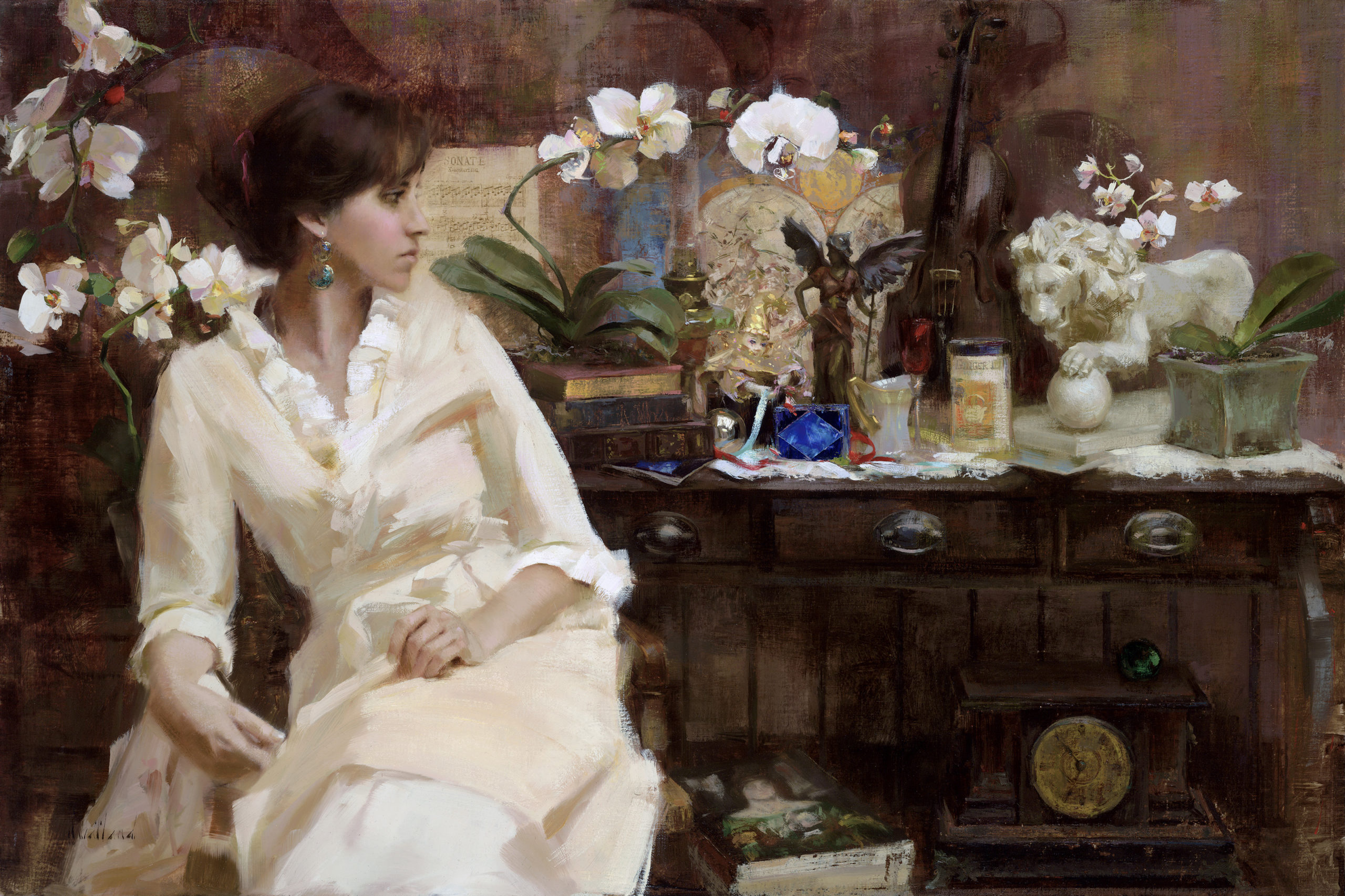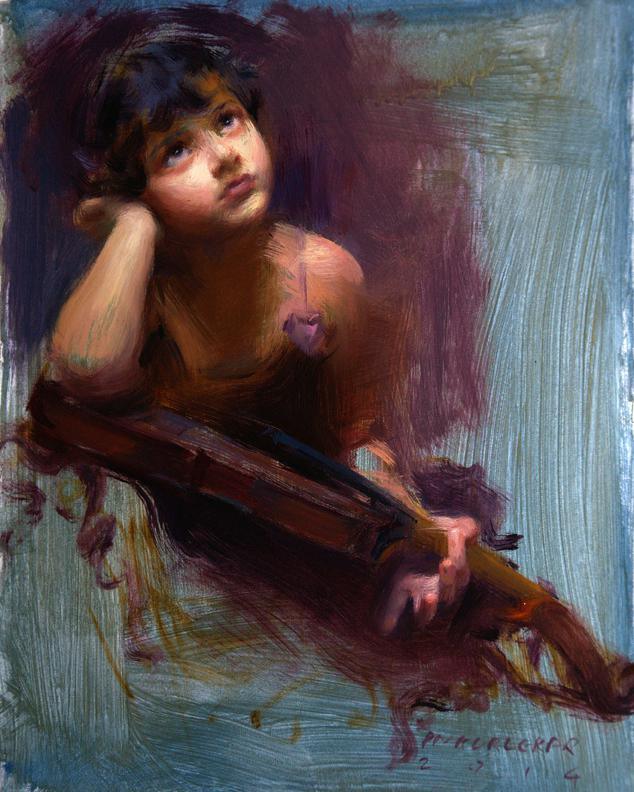Understanding Composition and Shade in Figurative Oil Painting
Understanding Composition and Shade in Figurative Oil Painting
Blog Article
The Development of Metaphorical Oil Painting: Recognizing Its Historic Value and Modern Interpretations
The evolution of figurative oil painting serves as a compelling lens where to check out the interaction in between artistic expression and historical context. From the meticulous naturalism of the Renaissance to the stirring power of the Baroque, each period has contributed layers of definition and strategy to this ageless tool. Contemporary musicians, attracting from this rich heritage, are now reinterpreting the human figure in ways that challenge typical narratives. As we explore these makeovers, one must consider just how the dialogue in between present and previous informs not only imaginative method however additionally social representations in a progressively complicated globe.
Beginnings of Metaphorical Oil Painting
The beginnings of metaphorical oil painting can be mapped back to the early Renaissance in Europe, especially in the 15th century. The development of oil paint enabled for better depth of color and information, improving the realistic look and vibrancy of their job.

In this transformative age, numbers were frequently portrayed within contextually abundant atmospheres, showcasing not just their physical features but additionally their mental states. Pioneers such as Jan van Eyck and Titian took advantage of the tool's flexibility, utilizing layering techniques to achieve luminosity and appearance. This innovation promoted the representation of complex fabrics and the subtleties of complexion, adding to the development of portrait and narrative scenes.
Additionally, the Renaissance emphasis on humanism cultivated a gratitude for uniqueness, which subsequently influenced musicians to create even more dynamic and relatable numbers - figurative oil painting. Consequently, metaphorical oil painting became an effective automobile for storytelling and psychological engagement, preparing for future imaginative movements and designs
Trick Historic Motions
Substantial historic motions have shaped the evolution of metaphorical oil painting, each contributing unique ideologies and techniques that broadened the tool's possibilities. The Renaissance noted a turning point, emphasizing realism and the human type, with artists like Leonardo da Vinci and Michelangelo pushing the limits of anatomical precision and perspective. Following this, the Baroque era brought remarkable contrasts of light and darkness, exemplified by Caravaggio, who infused spiritual styles with intense emotionality.
The 19th century presented Romanticism and Realistic look, where artists such as Delacroix and Courbet challenged classical perfects, concentrating on specific expression and daily life. The advent of Impressionism further transformed the medium by emphasizing the effects of light and shade, causing a separation from conventional depiction.
In the very early 20th century, movements like Expressionism and Cubism redefined figurative painting through abstraction and the expedition of emotional deepness. Each of these activities not just showed the societal modifications of their times however also laid the groundwork for contemporary interpretations. The interplay in between these historical activities has created a rich tapestry of philosophies and styles, influencing modern musicians in their pursuit of catching the human experience on canvas.
Strategies and Materials Evolution

Throughout the Baroque period, strategies such as chiaroscuro and sfumato emerged, enhancing the psychological resonance of figurative compositions. Artists began to trying out glazes and impasto, manipulating appearance and luminance. By the 19th century, advancements like the use of pre-mixed paints in tubes reinvented availability, allowing musicians to paint en plein air and catch the short lived effects of light.
The 20th century observed the introduction of artificial pigments and tools, which expanded the combination and altered the consistency of oil paints. The expedition of new application methods, such as scheme blades and brushes of varying tightness, more varied artistic expression. Collectively, these improvements mirror the evolving connection in between products, strategies, and the artistic vision fundamental in metaphorical oil paint.

Contemporary Analyses
Contemporary analyses of metaphorical oil paint mirror a vibrant discussion in between custom and advancement, where musicians test established norms and explore diverse themes. This evolution shows up in numerous means, as modern artists blend classical techniques with modern-day principles, usually resolving social, political, and individual narratives.
Numerous practitioners attract ideas from historic works, yet they instill their items with contemporary perspectives, utilizing the human kind as an automobile for commentary on gender, society, and identification. Artists increasingly experiment with abstraction, distortion, and multimedias, which permits a wider analysis of the figure and its context.
Moreover, making use of brilliant color schemes and non-traditional compositions usually serves to disrupt standard seeing experiences, prompting vital engagement from target markets. This shift in emphasis extends past aesthetic appeals; it reflects a growing recognition of the complexities of human experience in an interconnected globe.
As More about the author figurative oil paint continues to progress, it remains a crucial medium for checking out the subtleties of contemporary life, symbolizing both a respect for heritage and a commitment to dynamic thought. The result is an abundant tapestry of expression that resonates with the complexities of the modern-day human condition.
Effect on Modern Art
The influence of figurative oil painting on contemporary art is extensive, as it has actually continually inspired a myriad of creative activities and techniques throughout the 20th and 21st centuries. From Expressionism to Surrealism and beyond, the exploration of the human figure has try this actually continued to be a main theme, allowing artists to communicate complicated feelings and stories. This focus on metaphorical depiction has actually led to a re-examination of conventional methods, leading to ingenious techniques that mix realistic look with abstraction.
Additionally, modern musicians have actually welcomed metaphorical oil paint as a method to address social and political issues, utilizing the medium to challenge perceptions of culture, identification, and sex. The resurgence of passion in metaphorical operate in recent years shows a yearning for connection in a significantly electronic globe, where human experience and emotion are paramount.
Additionally, the discussion between metaphorical oil painting and modern-day art is obvious in the jobs of artists such as Kehinde Wiley and Jenny Saville, that make use of historical recommendations while instilling their pieces with modern importance. Eventually, metaphorical oil paint remains to shape and redefine contemporary artistic expression, emphasizing its enduring value in the art world.
Verdict
The advancement of figurative oil painting emphasizes its historical importance and flexibility across different creative activities. Ultimately, figurative oil paint continues to be an important medium for discovering the human experience, reverberating profoundly in today's digital landscape.
The advancement of metaphorical oil painting serves as a compelling lens with which to check out the interplay between creative expression and historical context.Substantial historic activities have shaped the evolution of figurative oil painting, each contributing special ideologies and techniques that expanded the medium's possibilities.As historical motions shaped the trajectory of figurative oil painting, the products and strategies used by musicians have actually additionally undertaken substantial transformations. figurative oil painting.The impact of figurative oil paint on modern-day art is extensive, as it has actually consistently motivated a myriad of imaginative activities and techniques throughout the 21st and 20th centuries.The visit here advancement of metaphorical oil painting highlights its historical significance and adaptability throughout numerous imaginative motions
Report this page